By Eric Vandenbroeck and co-workers
The Long Awaited Release
Hostages
After 254 people (included
children), were abducted by Hamas from Israel
to the Gaza Strip where they were held underground. Today 3
Israeli women in exchange for 90 Palestinian prisoners were let
go and arrived back in Israel today. Day two of the Israel-Hamas
ceasefire.
The long-awaited
ceasefire between Israel and Hamas in Gaza entered its second day on Monday,
following the return of the first Israeli hostages and the release of 90
Palestinian prisoners.
The images of Emily
Damari (a dual British-Israeli national), Romi Gonen and Doron
Steinbrecher, the first released hostages, overwhelmed by tears and joy as they
were reunited with their families have given Israelis a glimpse of what they’ve
been craving: relief, more than 15 months after the worst attack in their
history.
In the pictures of
their release last night, it was clear
that Emily Damari had lost two of her fingers, after she was shot by Hamas on the day she was
abducted.

The hospital in Tel
Aviv where they’re staying says they will remain for several days for
evaluation. It will certainly include psychological and trauma counselling, as
well as medical tests.
But the other images
of their release, surrounded by Hamas fighters as they were driven through
Gaza, also stand out.
The transfer of
Israeli hostages and Palestinian prisoners on Sunday was a “complex” operation
requiring “rigorous security measures,” according to the International
Committee of the Red Cross (ICRC).
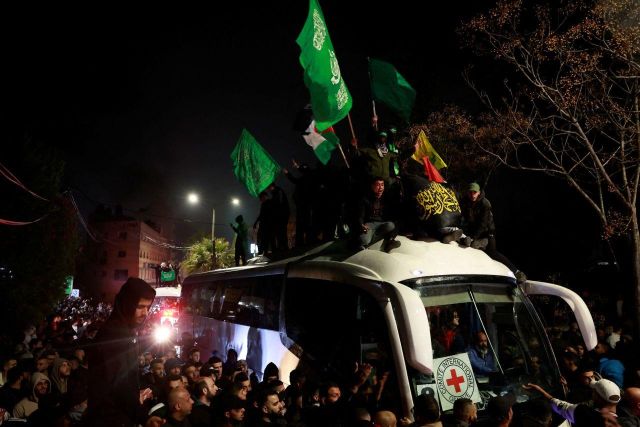
As a neutral
humanitarian body, the ICRC facilitates the safe transfer of hostages and
detainees. Its specialized staff include doctors who are on-hand to provide
care as needed.
An ICRC aid worker
escorts Israeli former hostage Doron Steinbrecher during
the handover from Hamas in Gaza
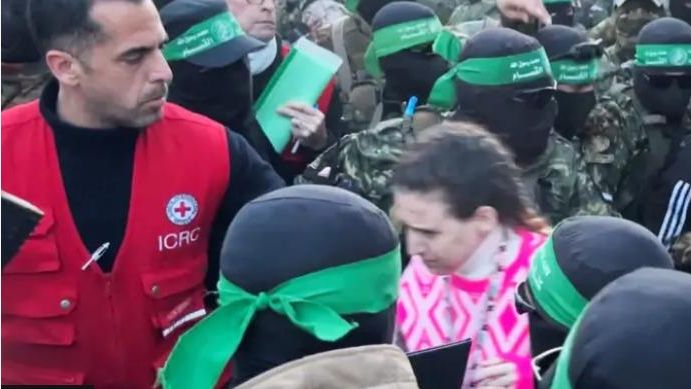
Benjamin Netanyahu, Israel’s
prime minister, vowed the “total annihilation” of Hamas. Yet even though it’s
been severely weakened, Hamas is still standing.
That could have
domestic political consequences for Netanyahu – and illustrates that the group
wants a stake in the future of Gaza.
Hundreds of aid
trucks crossed into Gaza on Sunday, and thousands more are waiting to ramp up
the distribution of desperately needed supplies into the Palestinian enclave,
much of which lies in total devastation after 15 months of war.
Prominent Palestinian
political leader and activist Khalida Jarrar was among the dozens of prisoners
released Sunday as part of the ceasefire deal between Israel and Hamas.
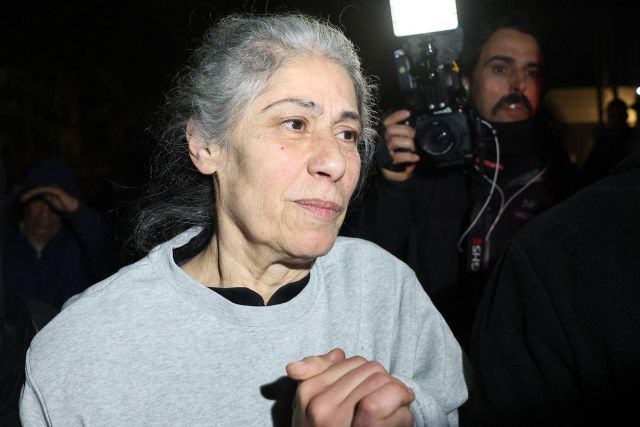
Jarrar, a former
lawmaker, is a leading member of the Popular Front for
the Liberation of Palestine (PFLP), a secular, nationalist entity, dating back to
the 1960s. It is the second-largest faction in the Palestine Liberation
Organization after Fatah and calls for the liberation of all of historical
Palestine.
The European Union,
the United States and Israel designated the PFLP a terrorist organization after
attacks on Israeli targets. Jarrar was not implicated in the attacks. The
Israeli military acknowledged in 2021 that she “did not deal with
organizational or military aspects of the organization,” according to the
Associated Press.
Video from Reuters
news agency on Sunday showed Jarrar inside a Red Cross bus transporting
Palestinian prisoners out of Ofer Prison in the occupied West Bank.
Later, photos showed
Jarrar embracing family as she arrived in Ramallah early on Monday.
Jarrar has been
arrested multiple times by Israel over her decades of activism. In 2015, she
was sentenced to 15 months on charges of incitement and membership in the PFLP,
according to the AP. But much of that time, Jarrar has been held in
administrative detention, the AP reported, meaning she has not faced public
charges or been put on trial.
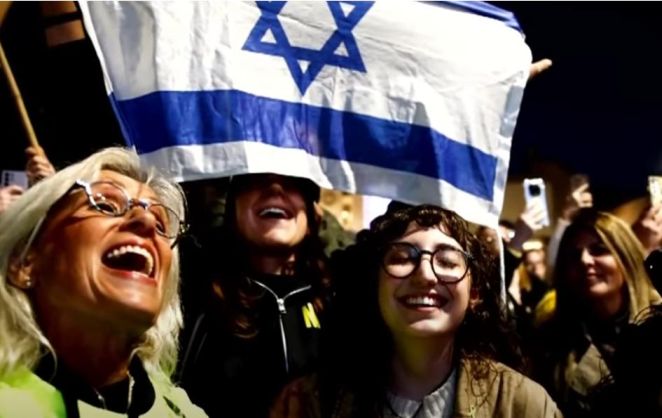
The ex-wife of a
hostage still held by Hamas in Gaza said her family remains hopeful he will be
released in the coming weeks following the “amazing moment” when three freed
Israeli women were reunited with their loved ones.
Five members of Hadas
Kalderon’s family were kidnapped during Hamas’ attack
on Kibbutz Nir Or on October 7, 2023. Her mother and niece were killed, while
her daughter, Saha, and son, Erez, were held for more than 50 days before they
were released in November 2023.
Kalderon’s ex-husband, Ofer, remains in captivity, and although
there has not been much information about him “for a long time,” Kalderon said her family are optimistic for their own
reunion.
Hundreds of aid
trucks crossed into Gaza on Sunday after the ceasefire between Israel and Hamas
came into effect, as residents spent their first night without Israeli
airstrikes in more than a year.
Over 15 months of
Israeli bombardment has laid waste to the Palestinian enclave, triggering a
humanitarian disaster marked by hunger, disease and a lack of medical care.
The ceasefire allows
for a dramatic uptick in humanitarian relief to enter Gaza, but the United
Nations has warned that would be “only a start.”
Hundreds of
Palestinians cheered, thronging two Red Cross buses as they arrived in Beitunia in the occupied West Bank on Monday. Many of the
women and teenaged boys released by Israel had been recently detained and not
tried or convicted.
Across Gaza, where
the fighting has killed tens of thousands and forced most people from their
homes, the first day of the ceasefire brought relief and sorrow. With Israeli
forces already pulling back from some areas, many families set off for home,
finding widespread destruction and bodies in the streets.
The deal brokered by
the US and regional mediators has raised hopes of an end to the devastating war
and the return of the nearly 100 remaining hostages held by Hamas.
But there is still
great uncertainty – with major questions remaining about whether the fighting
will resume after the initial six-week stage, and what the future holds for
Gaza.
A freed Palestinian prisoner greets her child after
her release from an Israeli jail
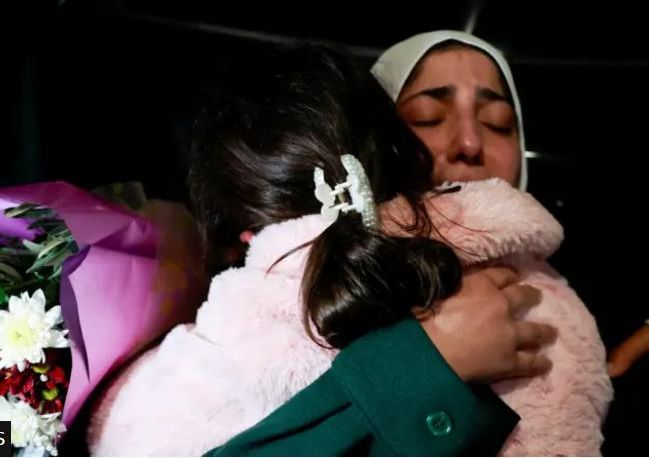
Hundreds of
Palestinians cheered, thronging two Red Cross buses as they arrived in Beitunia in the occupied West Bank on Monday. Many of the
women and teenaged boys released by Israel had been recently detained and not
tried or convicted.
Across Gaza, where
the fighting has killed tens of thousands and forced most people from their
homes, the first day of the ceasefire brought relief and sorrow. With Israeli
forces already pulling back from some areas, many families set off for home,
finding widespread destruction and bodies in the streets.
The deal brokered by
the US and regional mediators has raised hopes of an end to the devastating war
and the return of the nearly 100 remaining hostages held by Hamas.
But there is still
great uncertainty – with major questions remaining about whether the fighting
will resume after the initial six-week stage, and what the future holds for
Gaza.
Palestinian freed
prisoners wave to the crowd from a Red Cross bus that drove them out of the
Israeli Ofer military prison in the occupied West Bank, as they arrive in Beitunia, on the outskirts of Ramallah, in the early hours
of Monday
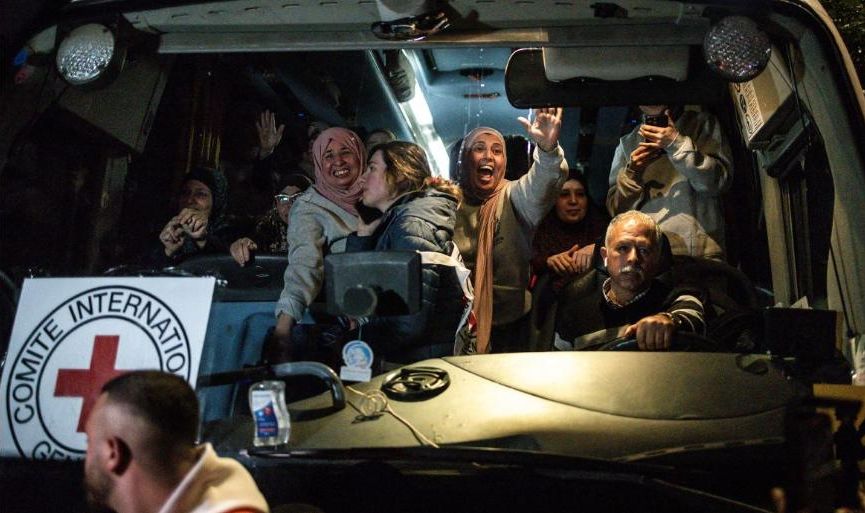
The ex-wife of a
Jewish hostage still held by Hamas in Gaza said her family remains hopeful he
will be released in the coming weeks following the “amazing moment” when three
freed Israeli women were reunited with their loved ones.
Five members of Hadas
Kalderon’s family were kidnapped during Hamas’ attack
on Kibbutz Nir Or on October 7, 2023. Her mother and niece were killed, while
her daughter, Saha, and son, Erez, were held for more than 50 days before they
were released in November 2023.
Kalderon’s ex-husband, Ofer, remains in captivity, and although
there has not been much information about him “for a long time,” Kalderon said her family are optimistic for their own
reunion.
“It’s like a
miracle,” Kalderon after the first of 33 captives to
be released by Hamas and its allies over the next six weeks returned to Israel.
“It’s very
complicated because it’s like a big, big joy and happiness, but also a lot of
fears and worries that it will keep on and that we must remember that we have
to bring all of them back, all the hostages.”
A wing of Sheba
Hospital, Israel’s largest, where the first released hostages have just spent
their first night of freedom. Their families stayed with them here overnight,
where they’ve been given private rooms with living rooms, along with a chef to
cater to what they want.
After an initial
assessment last night, Emily Damari, Romi Gonen and Doron Steinbrecher will
undergo comprehensive medical tests today, along with psychological
assessments.
Doron Steinbrecher
embraces loved ones, in this photo released by the Israeli government
yesterday.
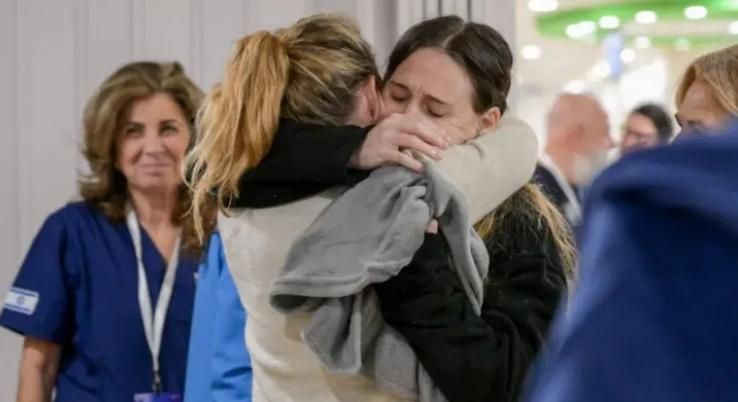
Sheba Hospital deals
with the majority of Israeli soldiers returning from Lebanon and Gaza, so they
have extensive experience of dealing with such injuries and worse - and she’ll
be given the necessary orthopaedic care during her
stay.
Sheba Hospital deals
with the majority of Israeli soldiers returning from Lebanon and Gaza, so they
have extensive experience of dealing with such injuries and worse - and she’ll
be given the necessary orthopaedic care during her
stay.
Supporters and
relatives of Israeli hostages held captive in the Gaza Strip, demonstrate
calling for an immediate end of the war and return of all the hostages, in Tel
Aviv on Sunday
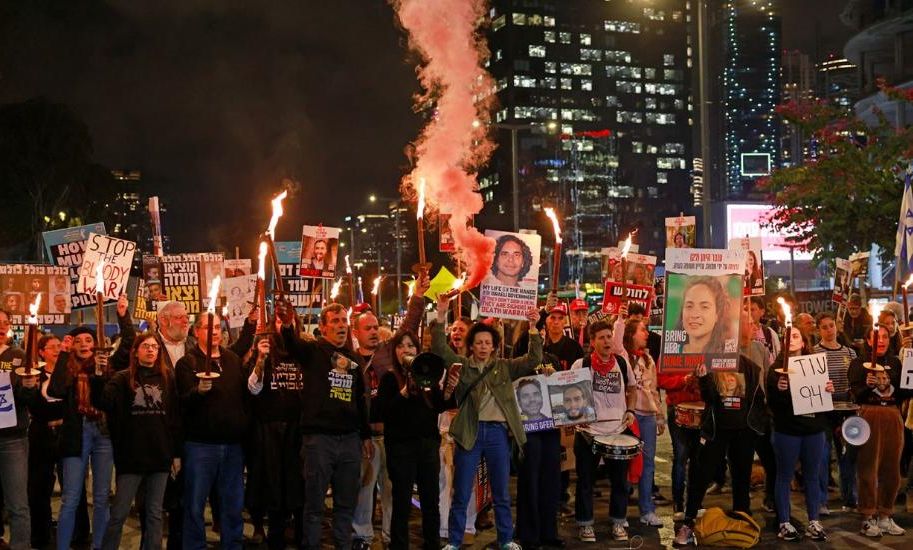
The head of the
United Nations’ Palestinian refugee agency said its teams “reported a good
first day of the ceasefire” with aid and some commercial supplies “flowing in
smoothly.”
“After 470+ days, the
people of Gaza hear the sound of children playing instead of bombardments and
airstrikes,” UNRWA commissioner General Philippe Lazzarini said on X Monday.
Trucks carrying humanitarian aid arrive in the Gaza
Strip via the Kerem Shalom crossing on Sunday.
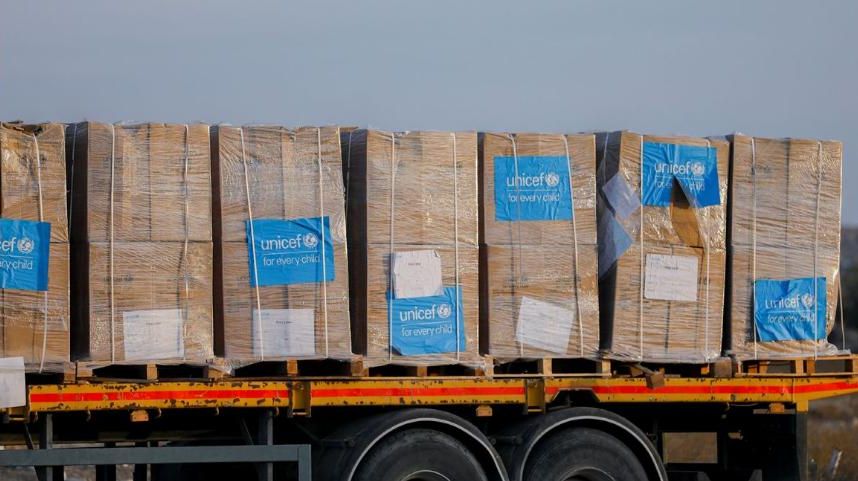
Conclusion
The ceasefire in Gaza
happens amid, and in part was only possible because of, dramatic changes in the
Middle East that isolated Hamas and eroded the influence of Iran, the group’s
main supporter, in the region.
In Lebanon,
Hezbollah, once the main player in what Tehran calls the Axis of Resistance,
was significantly weakened after its war with Israel, with its leadership
decimated.
In recent days, it
has also seen its political power diminish, with the arrival of a president and
a prime minister supported by the US and Saudi Arabia and not aligned with the
group.
Hezbollah’s setbacks
were a key factor that helped Turkish-backed Islamist rebels topple Bashar
al-Assad in a lightning offensive here in Syria last month. This put an end to
a five-decade dictatorship that was backed by Iran and gave it a land corridor to
arm Hezbollah next door.
The Houthis, an
Iranian proxy, have been repeatedly targeted by Israel and a US-led coalition
in Yemen.
For updates click hompage here